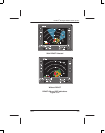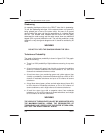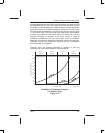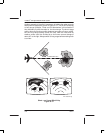
PRIMUS
R
660 Digital Weather Radar System
A28–1146–111
REV 2 5-39
Radar Facts
The more that is learned about radar, the more the pilot is an
all–important part of the system. The proper use of controls is essential
to gathering all pertinent weather data. The proper interpretation of that
data (the displayed patterns) is equally important to safety and comfort.
This point is illustrated again in figure 5–36. When flying at higher
altitudes, a storm detected on the long–range setting can
disappear from the display as it is approached. The pilot should not be
fooled into believing the storm has dissipated as the aircraft approaches
it. The possibility exists that the radiated energy is being directed from
the aircraft antenna above the storm as the aircraft gets closer. If this
is the case, the weather shows up again when the antenna is tilted
downward as little as 1_. Assuming that a storm has dissipated during
the approach can be quite dangerous; if this is not the case, the
turbulence above a storm can be as severe as that inside it.
OVERFLYING A STORM
HAIL
AD–12061–R1@
Overshooting a Storm
Figure 5–36


















